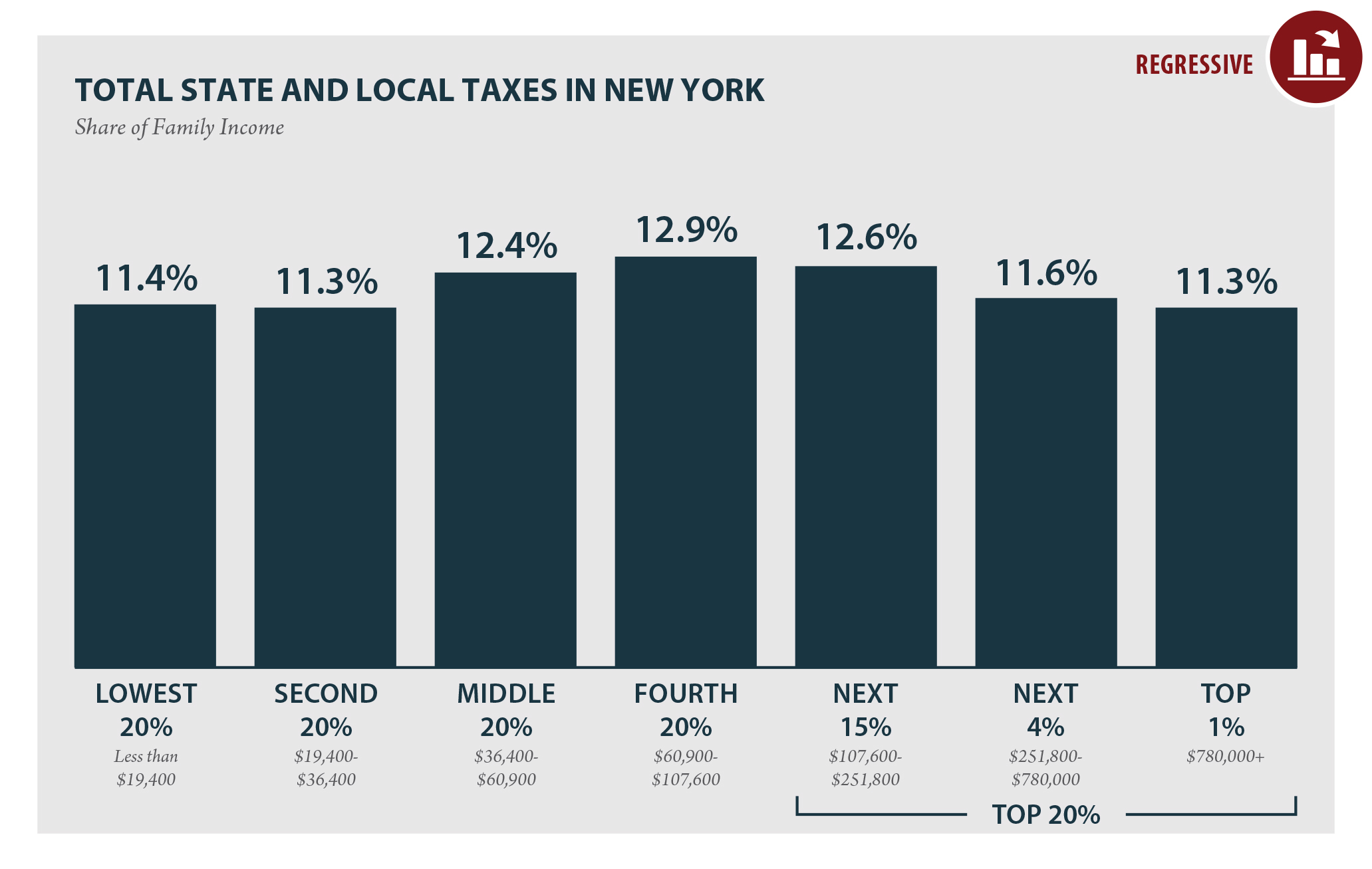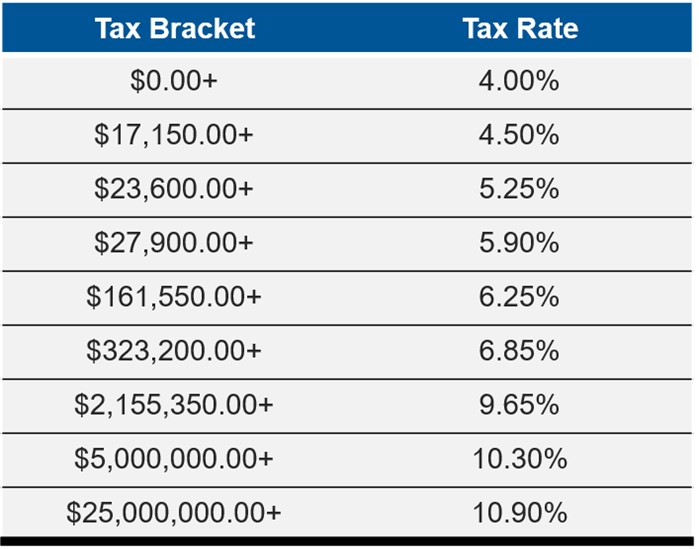New York State income tax percentage is a crucial factor for residents to understand as it directly impacts their financial planning and budgeting. The tax system in New York is progressive, meaning that higher earners pay a higher percentage of their income in taxes. Understanding how this percentage is calculated, the various brackets, and potential deductions can help individuals optimize their tax strategies. Whether you're a long-time resident or a newcomer, staying informed about the intricacies of New York's tax laws is essential for effective financial management.
With the ever-changing tax regulations and updates, it's important to stay current on how New York State income tax percentage affects your personal finances. This guide delves into the details of the tax brackets, exemptions, and credits available to residents. By the end of this article, you'll have a clearer understanding of how much you might owe and how to potentially reduce your taxable income.
Additionally, we will explore common questions and scenarios that taxpayers in New York face, ensuring you're well-prepared for tax season. From understanding the basics of the new york state income ta percentage to advanced strategies for reducing your tax burden, this article aims to provide comprehensive insights into the state's tax system.
Read also:Honeytoom The Sweet Revolution In Modern Technology
What Is the New York State Income Tax Percentage?
Many residents wonder, "What is the New York State income tax percentage?" The tax rates vary depending on your income level, with seven different brackets as of the latest updates. For instance, individuals earning up to $8,500 pay 4%, while those earning over $1,077,550 pay a top rate of 10.9%. These brackets are adjusted annually for inflation, ensuring fairness across different income levels.
How Does the New York State Income Ta Percentage Affect You?
The impact of the new york state income ta percentage depends on several factors, including your filing status, deductions, and credits. For example, if you're filing jointly with your spouse, the income thresholds for each tax bracket are higher. This means you may fall into a lower tax bracket than if you were filing singly. Understanding these nuances can help you better anticipate your tax obligations.
Can You Reduce Your New York State Income Tax Percentage?
Yes, there are strategies to potentially lower your new york state income ta percentage. Taking advantage of available deductions and credits is one way to reduce your taxable income. For instance, the Earned Income Tax Credit (EITC) can significantly lower your tax burden if you meet the eligibility criteria. Additionally, contributing to retirement accounts such as a 401(k) or IRA can also decrease your taxable income.
How Are Tax Brackets Determined in New York State?
Tax brackets in New York State are structured to ensure a fair distribution of tax responsibility based on income levels. The brackets are designed to increase incrementally, meaning that as your income rises, so does the percentage you pay in taxes. This system aims to balance the financial contributions of all residents, ensuring that those who earn more contribute proportionally more.
What Are the Current New York State Income Tax Brackets?
As of the latest updates, the current brackets for New York State income tax are as follows:
- Up to $8,500: 4%
- $8,501 - $11,700: 4.5%
- $11,701 - $13,900: 5.25%
- $13,901 - $21,400: 5.9%
- $21,401 - $80,650: 6.09%
- $80,651 - $215,400: 6.32%
- $215,401 - $1,077,550: 6.85%
- Over $1,077,550: 10.9%
These brackets highlight the progressive nature of the tax system, where higher income levels are taxed at a higher rate.
Read also:Unveiling The Journey An Indepth Look Into Jennylates Trans
Why Is Understanding New York State Income Tax Percentage Important?
Understanding the new york state income ta percentage is crucial for effective financial planning. By knowing how much of your income will go toward taxes, you can better allocate your resources and make informed decisions about investments, savings, and spending. Additionally, being aware of potential deductions and credits can help you minimize your tax liability.
Who Qualifies for Tax Deductions in New York State?
Tax deductions in New York State are available to a wide range of individuals and businesses. To qualify, you must meet specific criteria related to your income, expenses, and personal circumstances. Common deductions include mortgage interest, charitable contributions, and certain business expenses. By itemizing these deductions, you can potentially reduce your taxable income and lower your overall tax burden.
Can You Claim Credits Alongside Deductions?
Yes, you can claim both credits and deductions to further reduce your new york state income ta percentage. Credits are dollar-for-dollar reductions in your tax liability, making them more valuable than deductions, which only reduce your taxable income. Examples of available credits include the Child Tax Credit and the Residential Rental Property Credit.
How Do Deductions Impact Your New York State Income Tax Percentage?
Deductions can significantly impact your new york state income ta percentage by lowering your taxable income. For instance, if you itemize deductions such as medical expenses, state and local taxes, and mortgage interest, you may fall into a lower tax bracket. This can result in substantial savings, especially for those with significant deductible expenses.
What Are the Penalties for Late Payment of Taxes in New York State?
Failing to pay your taxes on time in New York State can result in penalties and interest charges. The state imposes a late payment penalty of 0.5% per month, up to a maximum of 25% of the unpaid tax. Additionally, interest is charged at the federal short-term rate plus 2%, compounding daily. It's essential to file and pay your taxes by the deadline to avoid these costly penalties.
How Can You Avoid Penalties on New York State Income Tax?
Avoiding penalties on new york state income ta percentage involves careful planning and timely submission of your tax returns. One strategy is to make estimated tax payments throughout the year if you expect to owe more than $1,000. By staying proactive and keeping accurate records, you can ensure compliance with state tax laws and avoid unnecessary fees.
Is There a Grace Period for Late Payments?
New York State does not offer a grace period for late tax payments. However, if you have a valid reason for missing the deadline, such as a natural disaster or serious illness, you may request an extension or penalty waiver. It's important to provide supporting documentation and apply promptly to increase your chances of approval.
Conclusion: Mastering Your New York State Income Tax Percentage
Understanding and managing your new york state income ta percentage is vital for maintaining financial stability and optimizing your tax strategy. By familiarizing yourself with the tax brackets, available deductions, and potential credits, you can make informed decisions that benefit your financial well-being. Remember to stay updated on any changes to state tax laws and seek professional advice if needed to ensure compliance and maximize your savings.
Table of Contents
- What Is the New York State Income Tax Percentage?
- How Does the New York State Income Ta Percentage Affect You?
- Can You Reduce Your New York State Income Tax Percentage?
- How Are Tax Brackets Determined in New York State?
- What Are the Current New York State Income Tax Brackets?
- Why Is Understanding New York State Income Tax Percentage Important?
- Who Qualifies for Tax Deductions in New York State?
- Can You Claim Credits Alongside Deductions?
- How Do Deductions Impact Your New York State Income Tax Percentage?
- What Are the Penalties for Late Payment of Taxes in New York State?


